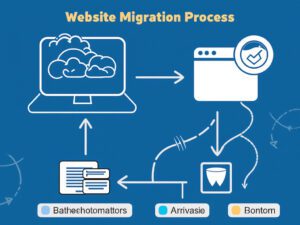In the digital age, where your website often serves as the first interaction point between your business and potential customers, performance, reliability, and security are not just perks—they’re necessities. While shared hosting might seem appealing due to its lower cost, managed virtual dedicated servers (VDS) offer a suite of advantages that can significantly elevate your business’s online presence. Here’s why opting for a VDS could be one of the best decisions for your business website.
1. Performance and Speed
Shared Hosting: On shared hosting, multiple websites reside on a single server, sharing its resources like CPU, memory, and disk space. This setup can lead to a “bad neighbor effect,” where one resource-intensive site can slow down others on the same server. During peak traffic times or if another site experiences a surge, your website’s performance can suffer, leading to slower load times.
Managed VDS: A virtual dedicated server allocates specific resources solely for your use. This isolation ensures that your website’s performance remains consistent, even during high traffic periods or when running resource-heavy applications. For businesses running paid ads, where every second of load time can affect conversion rates, this stability is crucial. Faster websites not only improve user experience but also boost SEO rankings.
2. Enhanced Security
Shared Hosting: Security in a shared environment is as strong as its weakest link. If another site on your server is compromised, there’s a potential risk to your site as well. Moreover, shared hosting often comes with limitations on security configurations.
Managed VDS: With a VDS, you have your own environment. This setup allows for customized security protocols tailored to your business needs. From firewalls to intrusion detection systems, you can implement higher security measures. Additionally, since you’re not sharing space, the risk of cross-site contamination is significantly reduced.
3. Scalability and Flexibility
Shared Hosting: Growth can be a double-edged sword with shared hosting. As your business expands, your website might outgrow the resources provided, leading to the need for migration, which can be cumbersome.
Managed VDS: VDS solutions are inherently scalable. You can easily upgrade resources like RAM, CPU, or storage without migrating to a new server. This flexibility ensures your website can handle increased traffic or additional functionalities as your business grows, without downtime or the hassle of moving hosts.
4. Cost-Effectiveness in the Long Run
While the upfront cost of a managed VDS is higher than shared hosting, consider the potential revenue loss from a slow or down website:
- Impact on Paid Advertising: If you’re investing in paid ads, every visitor counts. A single lost potential customer due to slow loading times or downtime can cost more than the price difference between shared hosting and a VDS. For instance, if your average customer lifetime value is $500, losing just one customer per month due to performance issues effectively covers the cost difference.
- SEO and User Experience: Google and other search engines penalize slow websites. A faster, more reliable site not only retains visitors but also improves your search engine rankings, leading to more organic traffic.
Conclusion: The Smart Choice with SoDak Hosting’s VDS Solutions
Choosing the right hosting for your business website isn’t just about immediate costs; it’s about investing in your business’s future. With SoDak Hosting’s managed Virtual Dedicated Server, you’re not just getting a hosting solution; you’re securing a foundation for growth, security, and unparalleled performance. Tailored to meet the demands of modern businesses, SoDak Hosting’s VDS ensures that your website operates at peak efficiency, safeguarding your online presence against the pitfalls of shared environments. Make the switch today, and propel your business forward with confidence, knowing that your digital infrastructure is as robust and dynamic as your business ambitions.


